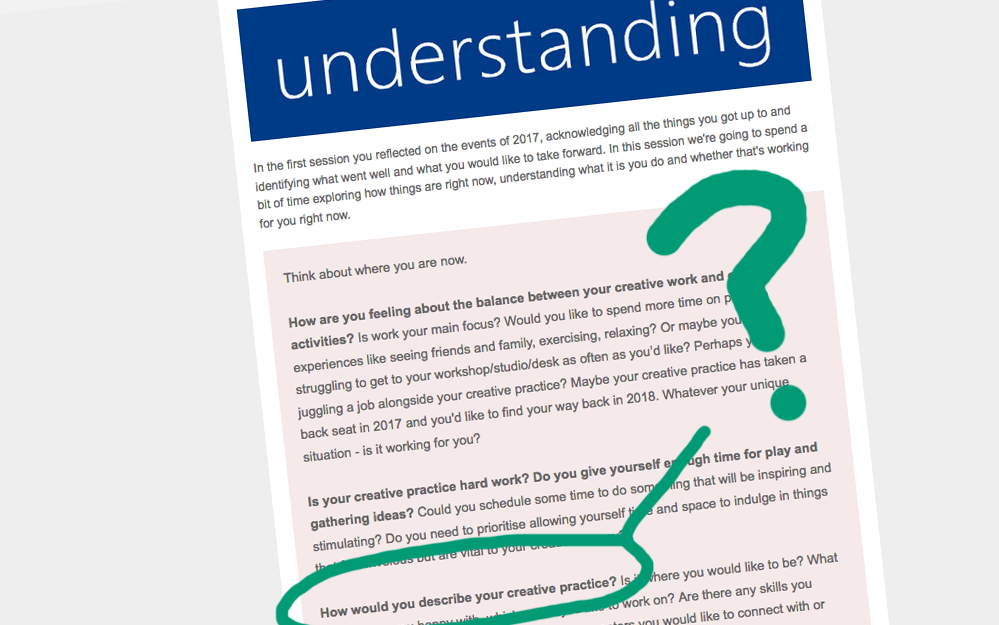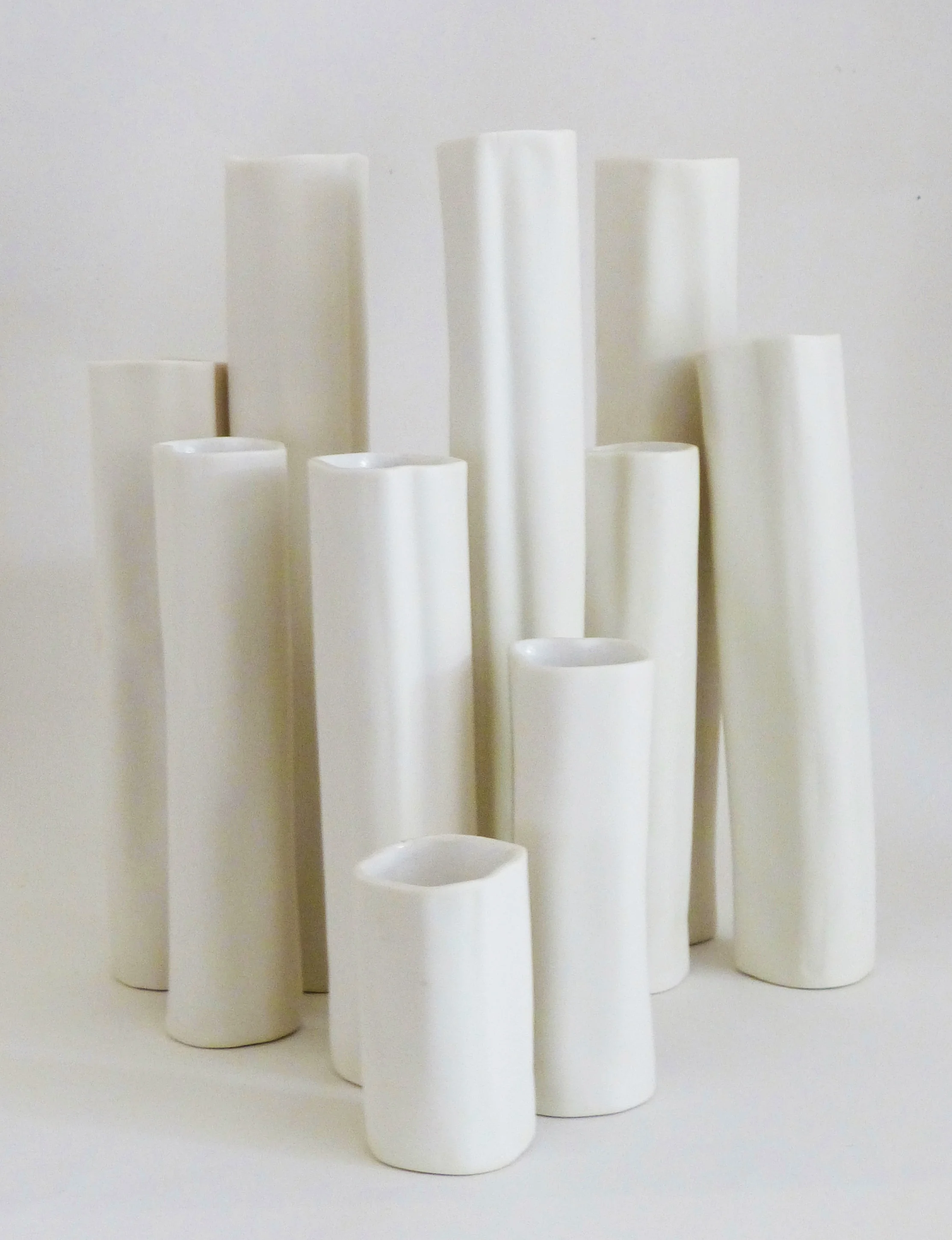Like many people, I’m using this quiet space at the beginning of the year to consider the state of things, to reflect on what went on in 2017 and to start putting together a very loose plan for 2018. I’ve been steadily working through guides and documents sent to me by people who advise and support creatives for a living, and having put together my own Creative Practice MOT course (which twenty lovely people are currently using) my head is filled with questions. Questions like ‘how do you feel about your creative practice?’ or ‘which of your services were most profitable in 2017?’ questions which may have definite answers or may lead to a vast place of unknowing…
It seems that the majority of New Year reflecting and planning guides make a number of assumptions about the people using them (I know I am guilty of this). They assume that you understand what your creative practice actually is, they assume that if you are running a business that business is well-defined and has tangible limits. But what if neither of these things are true? Which is pretty much where I find myself. Wondering what my creative practice really is, contemplating how a rag-tag bunch of events and activities constitutes a ‘business model’. In all honesty I’m not too fussed about knocking my business into a shape that others feel comfortable with – it is what it is at the moment and that’s fine with me. But, I do want to begin to untangle the complicated yarn ball that is my creative practice; this year I’d like it to make sense to me and, hopefully, then to the people I share it with.
I am not sure that the work I do with makers and other creatives, in supporting their creative practices, counts as my own ‘creative practice’. There are many things I do which stretch me creatively, and there are certainly things which I consider I have created, which would not exist otherwise. But is it the same as a creative practice where I make things – objects or ideas? Over the past couple of years I have struggled to reclaim my making practice (I’ve blogged about that here and here), and there’s still a long way to go on that front. But I also have a writing practice and that sometimes feels overlooked, undervalued.
Perhaps in reflecting on what has happened last year it’s also worth thinking about what hasn’t happened – what are the things that have got lost along the way? The things that may have been put down temporarily and then not picked up? The things that we’d probably say were key parts of us, they may even be defining things. But maybe they haven’t happened in a while. This is probably where my writing lives. Such an integral part of me, yet I have abandoned it slightly in the busyness of starting my own business. This would be a great thing to renew at this beginning of the year.
So, here’s to reclaining and rejuvenating parts of our creative practices that might need a little bit of dusting off. Welcome back! It’s been a while, but that’s ok. What shall we do together now?
A while back I did a project where I interviewed 3 makers about their practices and created two different pieces of writing for them – an artist’s statement and a piece of creative writing, a poem. The artists statements have been out in the world, being such useful texts, but the poems haven’t been shared before. Now feels like a good time.
Vessels and travels
Tall garden of vases, reaching upwards, curving inwards
hugging and diverging forms,
sinewy, stretched. Shadows pulled out like sticks of rock.
[In a winter garden by the sea I saw ferns
wrapped up and coddled from the frost.
Their shapes suggested by the white, creased fabric.]
Bright reflections, the inside of this pot like molten glass,
soon will be unseen, filled with green growth.
I hold the soft stony roughness of porcelain left bare.
[The light is achingly bright, bouncing off the building’s
hewn stone, whitewashed walls.
A blue so rarely seen, surrounds everything. I search for it still.]
Gentle pour-lines curve in this lily pad platter,
edges ripple softly, crimped pastry relaxing,
expectant and waiting.
[Flat unevenness, out to the mountain’s crinkly edges.
It took days to drive here, and now distance means nothing.
Lost in an expanse, lost in white.]
Poem by Melody Vaughan written in response to work by ceramicist Harriet Elkerton (you can see Harriet’s work this month at Top Drawer in London and at the Jam Factory in Oxford)

